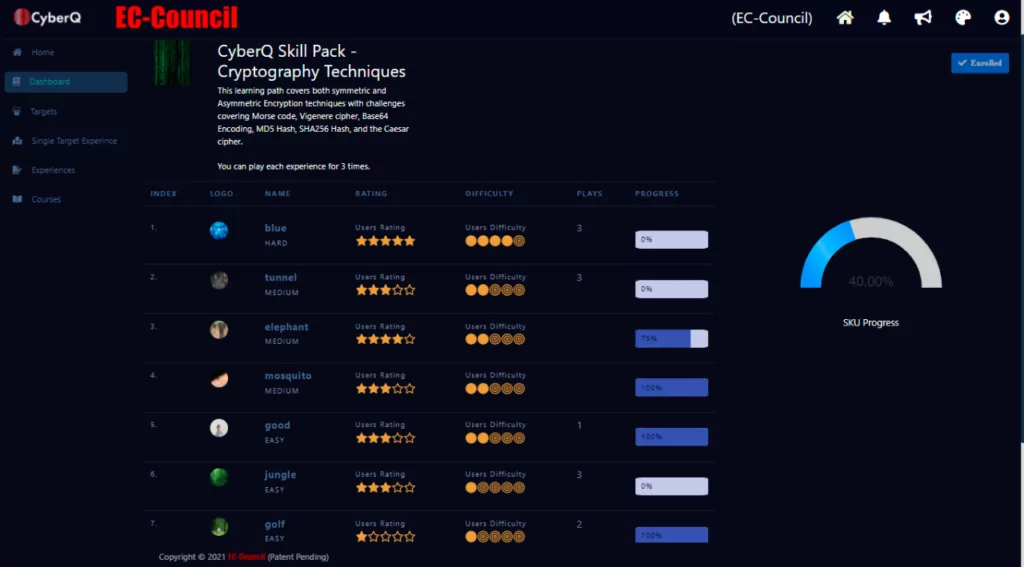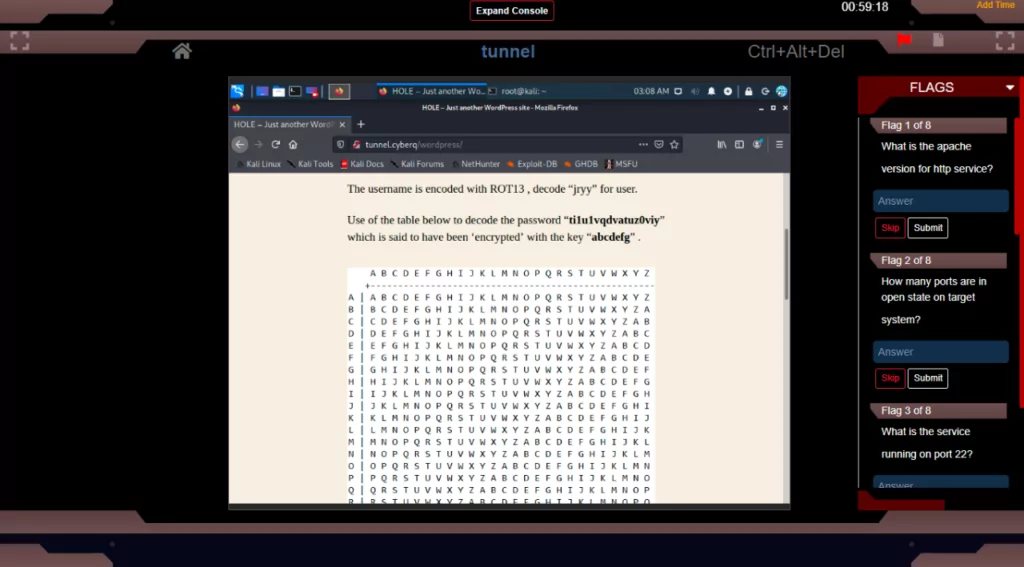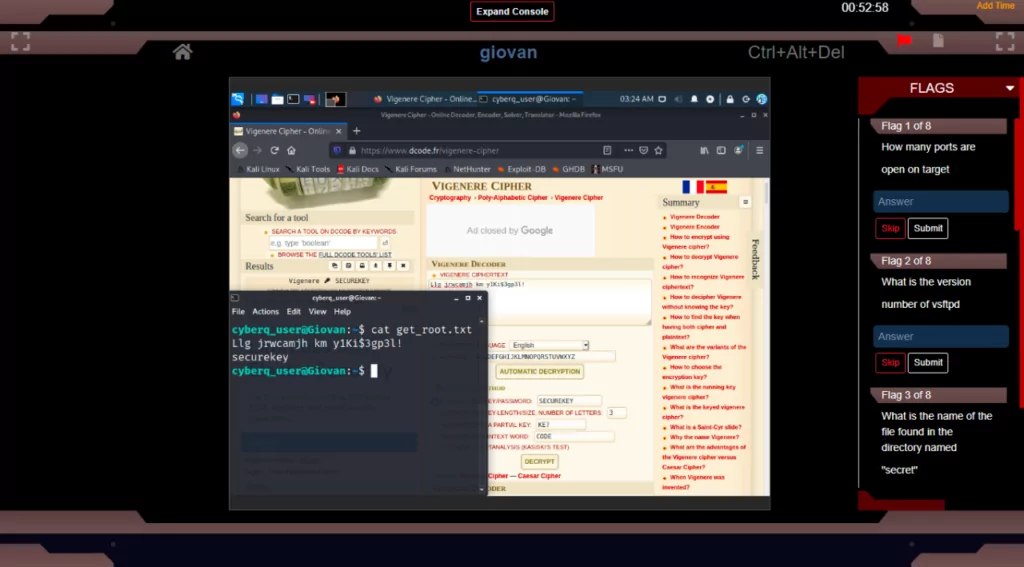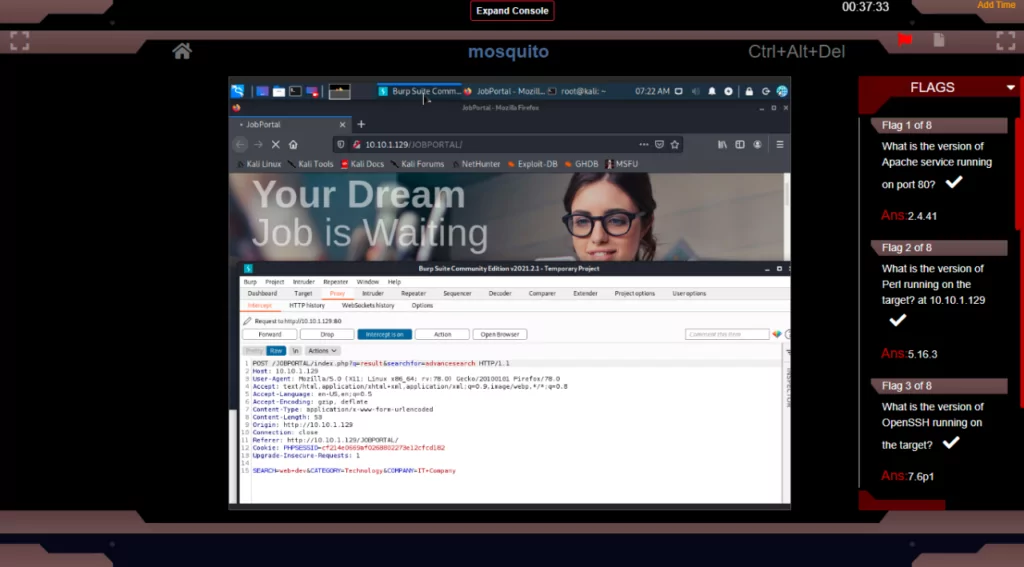
Ready to challenge your skills? Getting ready for a CTF or a Cyber Challenge?
Train With CyberQ Skill Pack Challenges
CyberQ Skillpacks are designed to test your skills in a variety of different challenges with limited guidance. Each challenge runs independently as its own “Self-Paced Capture the Flag.” Launching a Skill Pack challenge will reserve your very own space in our CyberQ Data Center, we will raise the Attack Console, as well as the down-range vulnerable targets for you to practice and challenge your skills.


Please note, this is not a learning lab. Skill packs are designed intentionally with challenges, puzzles, and preconfigured targets that will test your ability to identify, analyze, exploit, and own the targets. If you are new to Cyber and have never participated in a cyber challenge or competition, Skill packs may be too advanced. So, feel free to browse our learning products if this describes you, however, if you are ready for a challenge, enjoy solving complex puzzles and testing your limits, CyberQ challenges are a great way to hone your trade craft.
Cryptography Techniques Skill Pack
Network Security Engineer Salary
This Skill Pack will challenge your skills in salient web application hacking and penetration testing techniques including; Remote Code Execution, Local File Inclusion (LFI), SQL Injection, Arbitrary File Upload, Directory Traversal, Web Application Enumeration, Command Injection, Remote Buffer Overflow, Credential Attack, Shell Injection, and SSH Bruteforce Attacks.
Each challenge contains a fully designed target network with live virtual machines, servers, web hosts, and vulnerable sites and applications. Launching a challenge will open the CyberQ Console and safely connect you to our live attack environment right through your browser. Depending on the challenge, you will land in your attack machine, either Kali or Parrot, where you will have instant access to the full suite of attack tools required to carry out your challenge. Targets are preconfigured with host and application vulnerabilities which you will uncover as you progress through the challenges. CyberQ is a fully automated Cyber Range platform providing you with a self-driven ‘Capture-the-flag‘ experience in each challenge.
Gain direct hands-on practical experience on Industry’s leading Cyber Range Platform – CyberQ. Successful Completion of this Web Application Hacking and Penetration Testing Skill Pack will gain you Job-ready Cyber skills and execution efficiency against cyber challenges.
- Hands-on Experiences with Immersive Scenarios
- Designed for Deep Learning by Cyber Experts
- Latest Threats, Vulnerabilities and Techniques
- Practical Application of Skills on Cutting-edge Cyber Range
- Skills Feedback with Every Exercise
- Fully Loaded Attack Platform
- Preconfigured Live targets and vulnerable Hosts, Sites, and Applications “down-range”
@ $99.99
About Cryptography Skill Pack
“Cryptography” comes from the Greek words kryptos, meaning “concealed, hidden, veiled, secret, or mysterious,” and graphia, meaning “writing”; thus, cryptography is “the art of secret writing.”
Cryptography is the practice of concealing information by converting plaintext (readable format) into ciphertext (unreadable format) using a key or encryption scheme. It is the process of converting data into a scrambled code that is encrypted and sent across a private or public network. Cryptography protects confidential data such as email messages, chat sessions, web transactions, personal data, corporate data, e-commerce applications, and many other types of communication. Encrypted messages can, at times, be decrypted by cryptanalysis (code breaking), even though modern encryption techniques are virtually unbreakable.
Objectives of Cryptography
- Confidentiality: Assurance that the information is accessible only to those authorized to access it.
- Integrity: Trustworthiness of data or resources in terms of preventing improper and unauthorized changes.
- Authentication: Assurance that the communication, document, or data is genuine.
- Nonrepudiation: Guarantee that the sender of a message cannot later deny having sent the message and that the recipient cannot deny having received the message.
Cryptography Process
Plaintext (readable format) is encrypted by means of encryption algorithms such as RSA, DES, and AES, resulting in a ciphertext (unreadable format) that, on reaching the destination, is decrypted into readable plaintext.Types of Cryptography
Cryptography is categorized into two types according to the number of keys employed for encryption and decryption:
- Symmetric Encryption:“Cryptography” comes from the Greek words kryptos, meaning “concealed, hidden, veiled, secret, or mysterious,” and graphia, meaning “writing”; thus, cryptography is “the art of secret writing.” Cryptography is the practice of concealing information by converting plaintext (readable format) into ciphertext (unreadable format) using a key or encryption scheme. It is the process of converting data into a scrambled code that is encrypted and sent across a private or public network. Cryptography protects confidential data such as email messages, chat sessions, web transactions, personal data, corporate data, e-commerce applications, and many other types of communication. Encrypted messages can, at times, be decrypted by cryptanalysis (code breaking), even though modern encryption techniques are virtually unbreakable. Readmore Once an attacker has gained access to a remote system with a valid username and password, he/she will attempt to escalate the user account to one with increased privileges, such as that of an administrator, to perform restricted operations. These privileges allow the attacker to view critical/sensitive information, delete files, or install malicious programs such as viruses, Trojans, worms, etc. Objectives of Cryptography Confidentiality: Assurance that the information is accessible only to those authorized to access it. Integrity: Trustworthiness of data or resources in terms of preventing improper and unauthorized changes. Authentication: Assurance that the communication, document, or data is genuine. Nonrepudiation: Guarantee that the sender of a message cannot later deny having sent the message and that the recipient cannot deny having received the message. Cryptography Process Plaintext (readable format) is encrypted by means of encryption algorithms such as RSA, DES, and AES, resulting in a ciphertext (unreadable format) that, on reaching the destination, is decrypted into readable plaintext. Types of Cryptography Cryptography is categorized into two types according to the number of keys employed for encryption and decryption: Symmetric Encryption Symmetric encryption requires that both the sender and the receiver of the message possess the same encryption key. The sender uses a key to encrypt the plaintext and sends the resultant ciphertext to the recipient, who uses the same key (used for encryption) to decrypt the ciphertext into plaintext. Symmetric encryption is also known as secret-key cryptography, as it uses only one secret key to encrypt and decrypt the data. This type of cryptography works well when you are communicating with only a few people. Because the sender and receiver must share the key before sending any messages, this technique is of limited use for the Internet, where individuals who have not had prior contact frequently require a secure means of communication. The solution to this problem is asymmetric encryption (public-key cryptography).
- The concept of asymmetric encryption (also known as public-key cryptography) was introduced to solve key-management problems. Asymmetric encryption involves both a public key and a private key. The public key is publicly available, whereas the sender keeps the private key secret. An asymmetric-key system is an encryption method that uses a key pair comprising a public key available to anyone and a private key held only by the key owner, which helps to provide confidentiality, integrity, authentication, and nonrepudiation in data management.




Cryptography Techniques Covered in the Skill Pack
- Morse code
- Vigenere cipher
- Base64 Encoding
- MD5 Hash
- SHA256 Hash
- Caesar cipher
Gain related NICE skills for Steganography
S0001
Skill in conducting vulnerability scans and recognizing vulnerabilities in security systems.
S0009
Skill in assessing the robustness of security systems and designs.
S0044
Skill in mimicking threat behaviors.
S0051
Skill in the use of penetration testing tools and techniques.
S0137
Skill in conducting application vulnerability assessments.
S0364
Skill to develop insights about the context of an organization’s threat environment.
Related Job Roles for Steganography
- Blue Team Technician
- Red Team Technician
- Computer Network Defense (CND) Auditor
- Ethical Hacker
- Information Security Engineer
- Internal Enterprise Auditor
- Penetration Tester
- Network Security Engineer
- Technical Surveillance Countermeasures Technician
- Reverse Engineer
- Risk/Vulnerability Analyst
- Vulnerability Manager
Continue on your Cyber Proficiency Journey with Skill Packs Designed by Our Cyber Experts
- Web App Hacking and Pen Testing
- Service Exploitation
- Privilege Escalation
- Red Team Architect
- Cryptography
- Vulnerability Research for Hackers and Pen Testers
- Steganography
- SQL Injection
- Password Cracking

